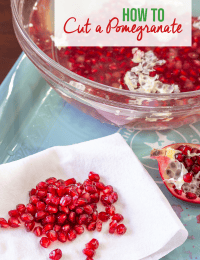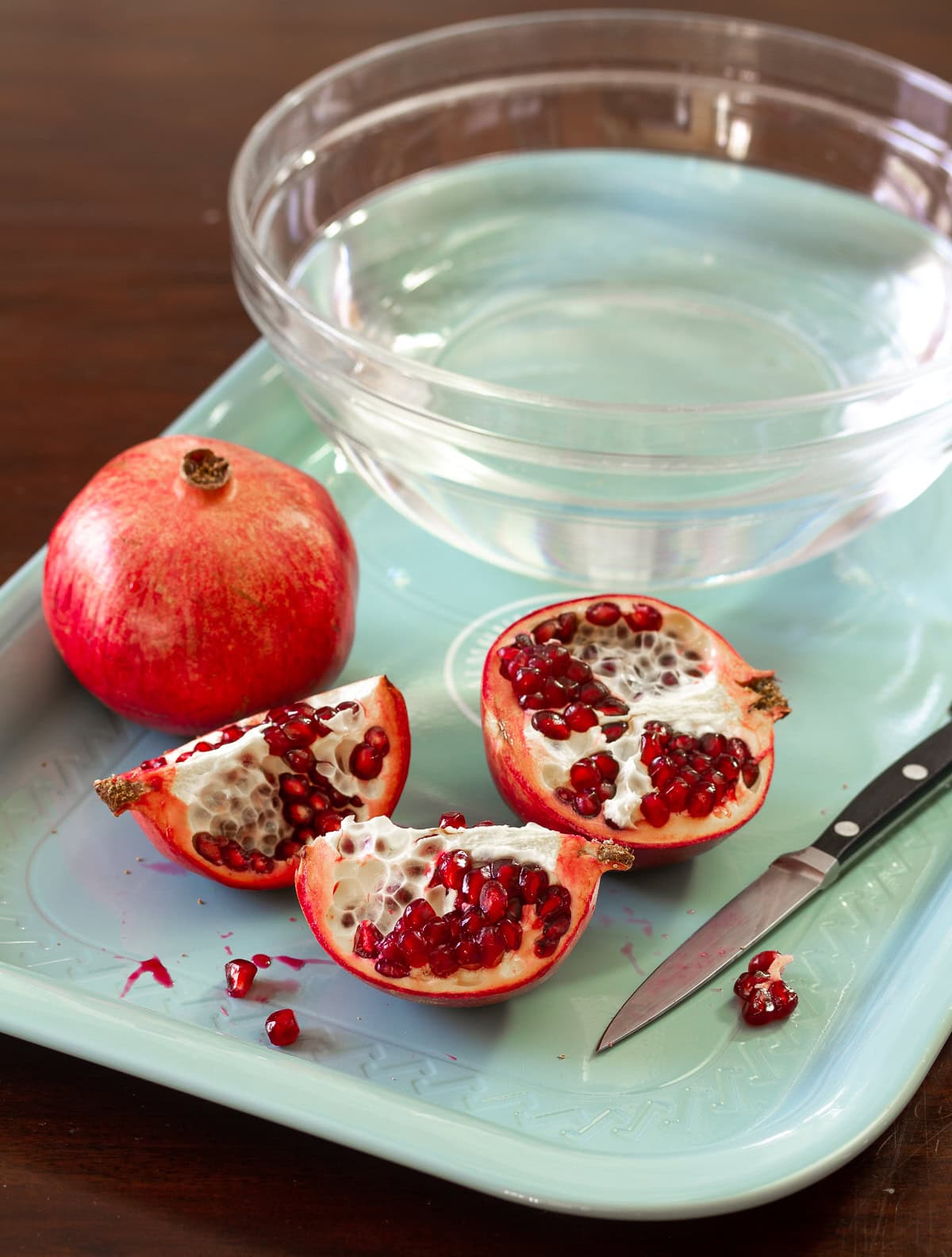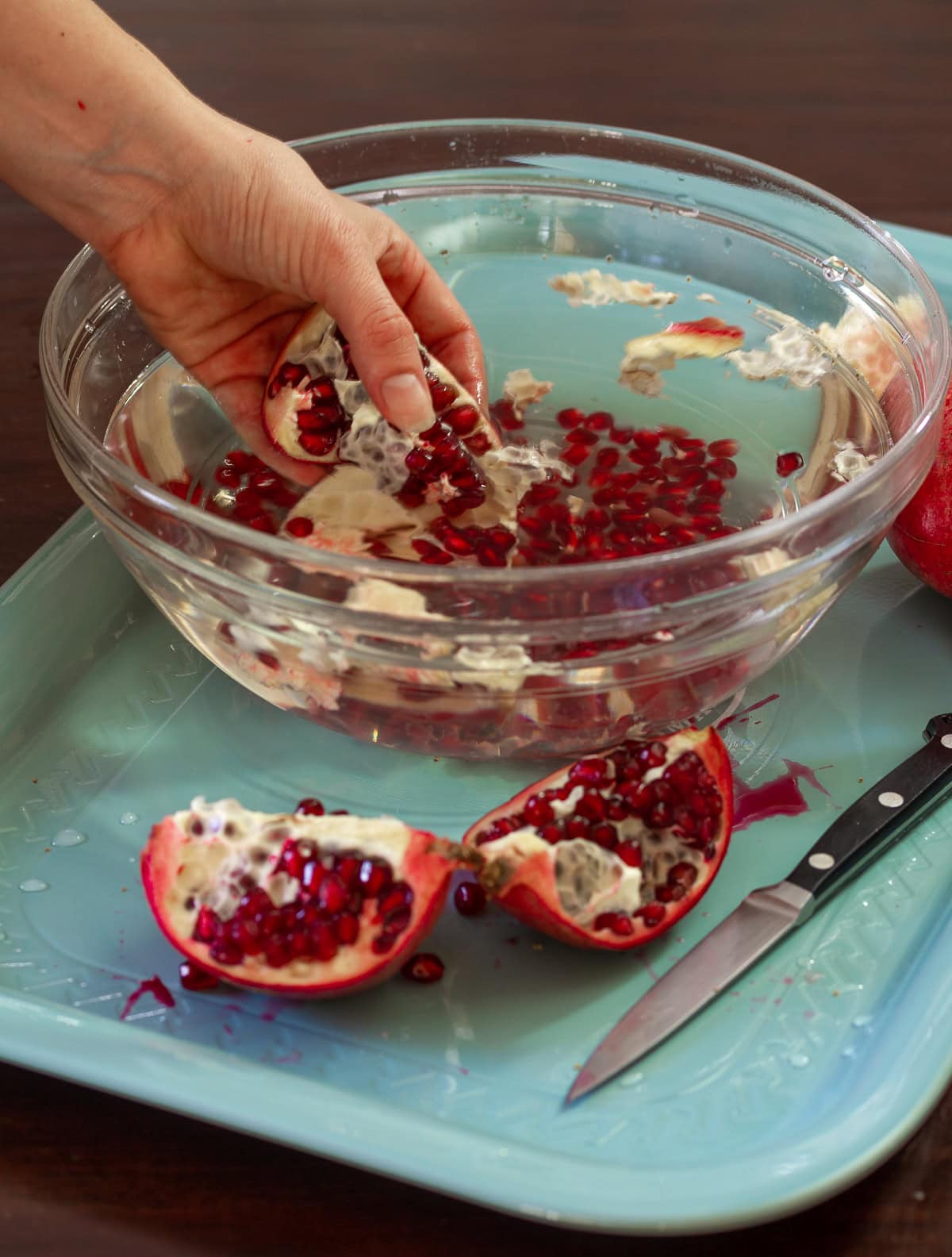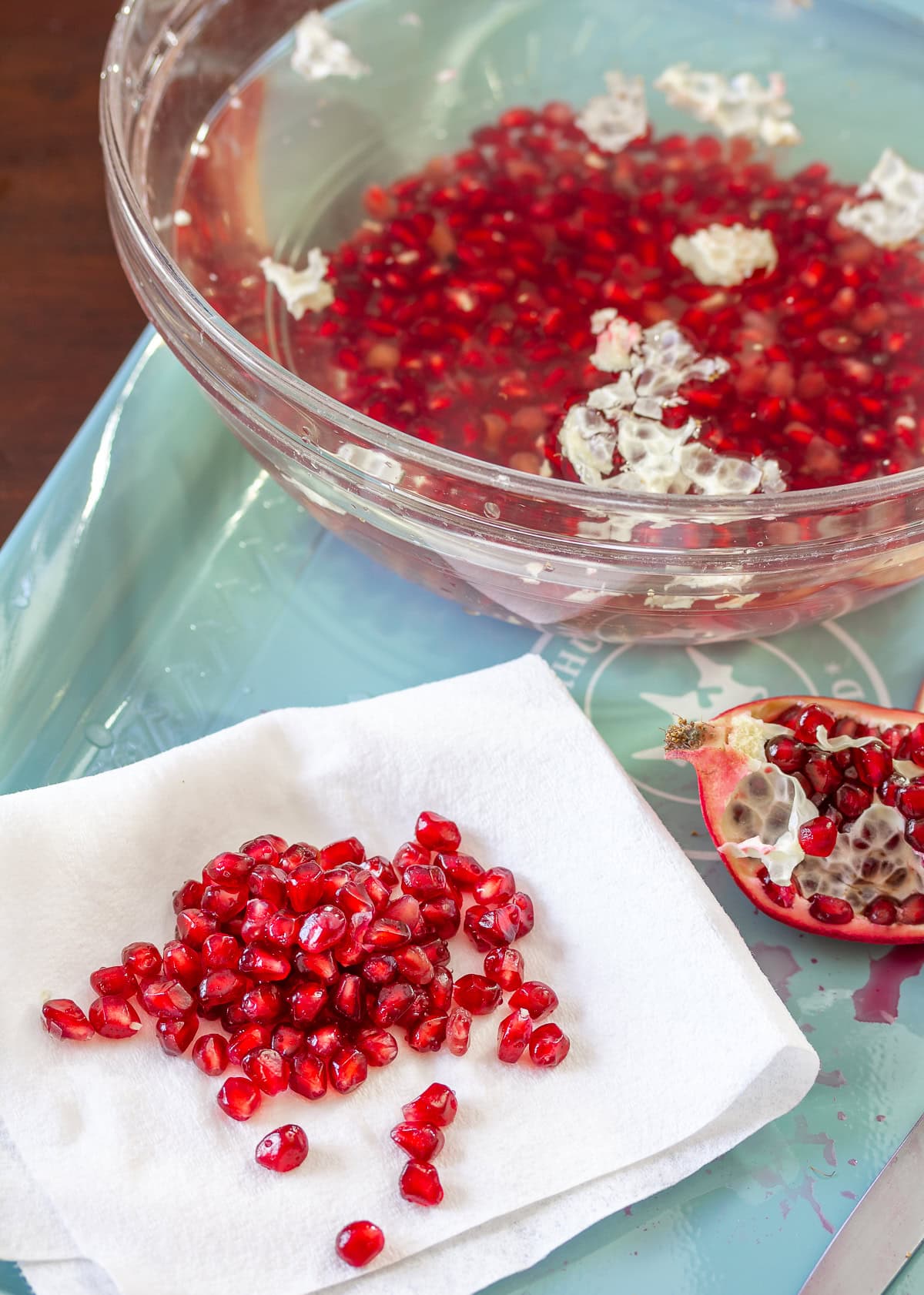Extracting Pomegranate Arils
There are many little kitchen tricks I use on a daily basis that shorten my cooking time and improve my kitchen experience over all. I’ve been meaning to share these with you in separate posts (to make them easy to find) for two… ahem, maybe three years now. Sorry. Better late than never, I always say. I realize many of you are kitchen savants and need no additional instruction from me. You just pop by for weekly dinner ideas. Yet many of you are new to cooking, and when I tell you the preparation time for a recipe is 10 minutes, it takes you 25. Don’t be frustrated with yourself; we all started that way. Hopefully these weekly tips will help speed up your preparation time and relieve little cooking stresses. I’ll be discussing everything from chopping to dealing with hard-to-handle produce. Like today! Let’s talk about how to cut a pomegranate and extract the pomegranate seeds. The actual term for pomegranate seeds is pomegranate arils. So if you want to sound fancy, call them arils. I’ve seen (and tried) all sorts of methods for opening a pomegranate, from rolling the pomegranate, to beating it with a wooden spoon. The method of how to cut a pomegranate, that I find to be the best (meaning it yields the most unsquashed/uncut pomegranate seeds, with the fewest splatter stains) is this…
How to Cut a Pomegranate
Pomegranate Tips and Tricks
Here are a few tips and tricks that I have learned throughout the years to make cooking and baking with pomegranates a little bit easier.
Loosening the pomegranate seeds in a bowl of water will help the arils sink to the bottom and the white flesh will float up, making it easy to skim. Submerging the pomegranate sections in water also eliminates red juice splatter on your clothes. (Which is a major one because that juice stains!) The way that you find the best pomegranate is by the color of its skin. The deeper and darker that the red coloring is on the outside, the sweeter the arils will be on the inside. If it is lighter in color, like a pink or salmon color, then the pomegranate is not ripe enough and will result in dry tart fruit. The seeds on the inside of the juice-filled arils are completely edible and they are actually a great source of antioxidants, punic acid, and insoluble fiber. Eating pomegranates will have your body and skin thanking you because they have been known to carry anti-aging benefits by improving the skin’s texture with a production of collagen and elastin!
What is so special about pomegranates?
Pomegranate seeds offer a bright juicy punch of flavor to all sorts of recipes. They make salads and fruit platters look opulent, and lift heavier flavors in rice dishes and creamy pasta recipes. This fruit is high in vitamin c and vitamin A. Pomegranates are also a great source of fiber as well.
When are they in season?
Pomegranates are in season for a fairly short period of time. The peak of their season is in late fall and throughout the winter months.
How do I store the seeds?
Pomegranates should be stored in the refrigerator and they can last for three to four weeks in the fridge before deseeding. After extracting the seeds, they can last in the fridge for 1 to 2 weeks. Or you can store them in the freezer in a tightly sealed bag for up to 3 months.
Other How To Posts
How to Cut a Mango How to Cut Avocados How to Cut a Pineapple How to Make Buttermilk How to Finely Chop an Onion How to Cook Fish Perfectly (Cooking Fish 101) How to Grill Salmon How to Cook Bacon in the Oven How to Clean Shrimp
Share This Recipe With Friends!





